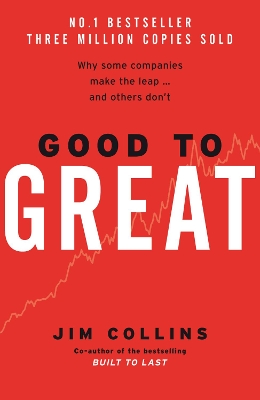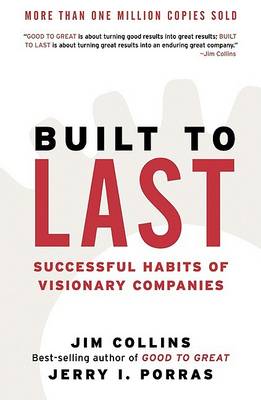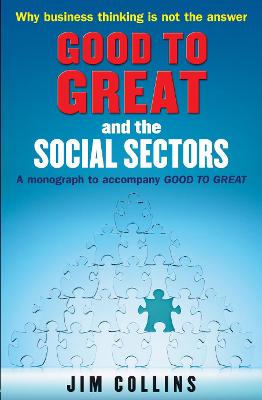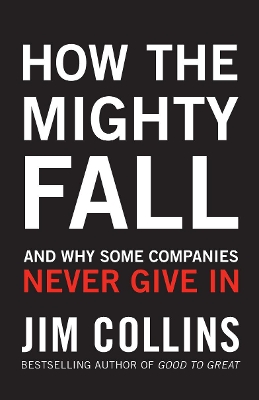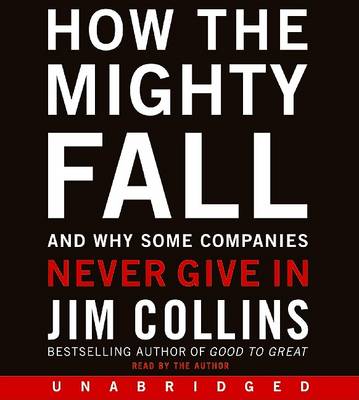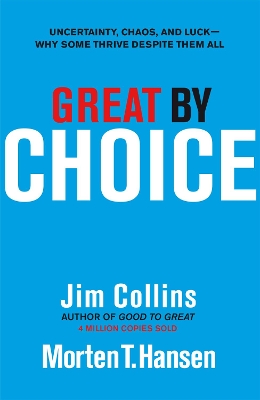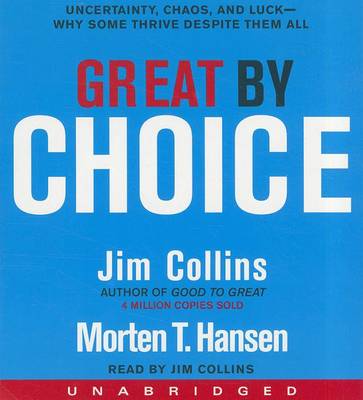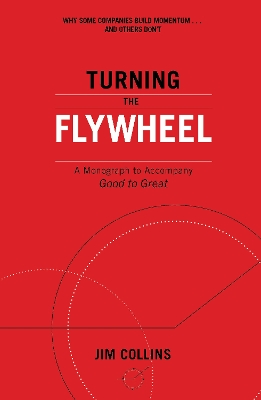Good to Great
10 primary works
Book 1
________________________________
Can a good company become a great one? If so, how?
After a five-year research project, Jim Collins concludes that good to great can and does happen. In this book, he uncovers the underlying variables that enable any type of organisation to make the leap from good to great while other organisations remain only good. Rigorously supported by evidence, his findings are surprising - at times even shocking - to the modern mind.
Good to Great achieves a rare distinction: a management book full of vital ideas that reads as well as a fast-paced novel. It is widely regarded as one of the most important business books ever written.
Book 2
Book 2
Book 3
'We must reject the idea - well-intentioned, but dead wrong - that the primary path to greatness in the social sectors is to become "more like a business".'
So begins this astonishingly blunt and timely manifesto by leading business thinker Jim Collins. Rejecting the belief, common among politicians, that all would be well in society if only the public sector operated more like the private sector, he sets out a radically new approach to creating successful hospitals, police forces, universities, charities, and other non-profit-making organisations. In the process he rejects many deep-rooted assumptions: that somehow it's possible to measure social bodies in purely financial terms; that they can be managed like traditional businesses; that they can be transformed simply by throwing money at them. Instead he argues for radical new attitudes and strategies, using the analytical approach and clear thinking that lie at the heart of Good to Great.
Book 4
Decline can be avoided.
Decline can be detected.
Decline can be reversed.
Amidst the desolate landscape of fallen great companies, Jim Collins began to wonder: How do the mighty fall? Can decline be detected early and avoided? How far can a company fall before the path toward doom becomes inevitable and unshakable? How can companies reverse course?
In How the Mighty Fall, Collins confronts these questions, offering leaders the well-founded hope that they can learn how to stave off decline and, if they find themselves falling, reverse their course. Collins' research project-more than four years in duration-uncovered five step-wise stages of decline:
Stage 1: Hubris Born of Success
Stage 2: Undisciplined Pursuit of More
Stage 3: Denial of Risk and Peril
Stage 4: Grasping for Salvation
Stage 5: Capitulation to Irrelevance or Death
By understanding these stages of decline, leaders can substantially reduce their chances of falling all the way to the bottom.
Great companies can stumble, badly, and recover.
Every institution, no matter how great, is vulnerable to decline. There is no law of nature that the most powerful will inevitably remain at the top. Anyone can fall and most eventually do. But, as Collins' research emphasizes, some companies do indeed recover-in some cases, coming back even stronger-even after having crashed into the depths of Stage 4.
Decline, it turns out, is largely self-inflicted, and the path to recovery lies largely within our own hands. We are not imprisoned by our circumstances, our history, or even our staggering defeats along the way. As long as we never get entirely knocked out of the game, hope always remains. The mighty can fall, but they can often rise again.
Book 4
Book 5
THE NEW QUESTION
Ten years after the worldwide bestseller Good to Great, Jim Collins returns with another groundbreaking work, this time to ask: Why do some companies thrive in uncertainty, even chaos, and others do not? Based on nine years of research, buttressed by rigorous analysis and infused with engaging stories, Collins and his colleague, Morten Hansen, enumerate the principles for building a truly great enterprise in unpredictable, tumultuous, and fast-moving times.
THE NEW STUDY
Great by Choice distinguishes itself from Collins's prior work by its focus not just on performance, but also on the type of unstable environments faced by leaders today. With a team of more than twenty researchers, Collins and Hansen studied companies that rose to greatness - beating their industry indexes by a minimum of ten times over fifteen years - in environments characterized by big forces and rapid shifts that leaders could not predict or control. The research team then contrasted these "10X companies" to a carefully selected set of comparison companies that failed to achieve greatness in similarly extreme environments.
THE NEW FINDINGS
The study results were full of provocative surprises. Such as:
* The best leaders were not more risk taking, more visionary, and more creative than the comparisons; they were more disciplined, more empirical, and more paranoid.
* Innovation by itself turns out not to be the trump card in a chaotic and uncertain world; more important is the ability to scale innovation, to blend creativity with discipline.
* Following the belief that leading in a "fast world" always requires "fast decisions" and "fast action" is a good way to get killed.
* The great companies changed less in reaction to a radically changing world than the comparison companies.
The authors challenge conventional wisdom with thought-provoking, sticky, and supremely practical concepts. They include 10Xers; the 20 Mile March; Fire Bullets then Cannonballs; Leading above the Death Line; Zoom Out, Then Zoom In; and the SMaC Recipe. Finally, in the last chapter, Collins and Hansen present their most provocative and original analysis: defining, quantifying, and studying the role of luck. The great companies and the leaders who built them were not luckier than the comparisons, but they did get a higher Return on Luck. This book is classic Collins: contrarian, data driven, and uplifting. He and Hansen show convincingly that, even in a chaotic and uncertain world, greatness happens by choice, not by chance.
Book 5
Book 6
__________________
*From the author of the multi-million-copy bestseller Good to Great*
‘No matter what your walk of life, no matter how big or small your enterprise, no matter whether it’s for-profit or nonprofit, no matter whether you’re CEO or a unit leader, the question stands, How does your flywheel turn?’ – JIM COLLINS
__________________
The key to business success is not a single innovation or one plan. It is the act of turning the flywheel, slowly gaining momentum and eventually reaching a breakthrough. Building upon the flywheel concept introduced in his groundbreaking classic Good to Great, Jim Collins teaches readers how to create their own flywheel, how to accelerate the flywheel’s momentum, and how to stay on the flywheel in shifting markets and during times of turbulence.
Combining research from his Good to Great labs and case studies from organisations like Amazon, Vanguard, and the Cleveland Clinic which have turned their flywheels with outstanding results, Collins demonstrates that successful organisations can disrupt the world around them – and reach unprecedented success – by employing the flywheel concept.
Book 6
